Scrum
Conference Presentations
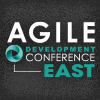 |
The Enterprise Product Owner: It Takes a Village
Slideshow
In classic Scrum textbooks, the Product Owner (PO) permanently hangs out in the agile team room, churning out a stream of user stories, regularly prioritizing the backlog, deciding color schemes for screen design-all while keeping the team focused and making coffee. In an enterprise agile project, it is physically impossible for one person to do everything the PO role requires. Elena Yatzeck believes the enterprise PO must be a team role, where the different people move in and out of their PO responsibilities in a disciplined and predictable way. To illustrate, Elena leads a simulation that takes you through a full enterprise agile project, providing shared PO resources to help you with each aspect of the project. She offers PO advice on organizational change models, team design techniques, extended story templates, and tips for backlog grooming. |
Elena Yatzeck, JPMorgan Chase
|
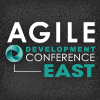 |
Agile at Scale with Scrum: The Good, the Bad, and the Ugly
Slideshow
Come hear the story of how a business unit at one of the world's largest networking companies transitioned to Scrum in eighteen months. The good-more than forty teams in one part of the company moved quickly and are going gangbusters. The bad-an adjacent part failed in its transition. The ugly-if you're in a large company with globally distributed teams, it's not hard to torpedo Scrum adoption. Steve Spearman and Heather Gray describe Scrum adoption challenges for a multi-million line, monolithic system developed across multiple locations worldwide. They share the techniques and tools that helped them implement Scrum in just two project cycles and the reasons part of the company failed to make the leap. |
Steven Spearman, AgileEvolution
|
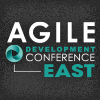 |
Distributed Scrum: Dangerous Waters-Be Prepared!
Slideshow
Even though team collocation is strongly recommended in agile methodologies, a distributed team is often required in the real world today. What is so important about collocating anyway? Can you overcome the challenges of a distributed Scrum team and still remain agile? What are the solutions? Brian Saylor tackles these important questions and more. While Brian realizes that implementing Scrum and agile practices in a distributed team is not easy, he found that it is possible if you understand the inherent problems and work hard-every day-to overcome them. Brian walks you through the reasons collocating is important for agile teams and the extra challenges distributed agile teams face. Then he dives into practical, real-world tools, tips, and techniques that organizations should research and consider before jumping into distributed waters-and don’t forget your life jacket. |
Brian Saylor, Scripps Networks Interactive
|
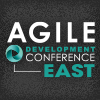 |
Scaling Agile at Dell: Real-life Problems - and Solutions
Slideshow
The transition from waterfall-based software development to an agile, iterative model carries with it well-known challenges and problems-entrenched cultures, skill gaps, and organizational change management. For a large, globally distributed software development organization, an entirely different set of practical challenges comes with scaling agile practices. Last year the Dell Enterprise Solutions Group applied agile practices to more than forty projects ranging from a collocated single team project to projects that consisted of fifteen Scrum teams located across the US and India. Geoff Meyer and Brian Plunkett explain how Dell mined these real-life projects for their empirical value and adapted their agile practices into a flexible planning model that addresses the project complexities of staffing, scale, interdependency, and waterfall intersection. |
Geoffrey Meyer, Dell Inc. l Enterprise Product Group
|
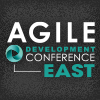 |
Transitioning to Kanban: From Theory to Practice
Slideshow
You're familiar with agile and, perhaps, practicing Scrum. Now you're curious about Kanban. Is it right for your project? How does Kanban differ from Scrum and other agile methodologies? From theory to practice, Gil Irizarry introduces Kanban principles and explains how Kanban's emphasis on modifying existing processes rather than upending them results in a smooth adoption. Instead of using time-boxed units of work, Kanban focuses on continuous workflow, allowing teams to incrementally improve and streamline product delivery. Explore how to move from Scrum to Kanban with new, practical techniques that can help your team quickly get better. Discover the use of cumulative flow diagrams, WIP (work-in-progress) limits, and classes of services. In a hands-on classroom exercise, you'll help create a value stream map, determine process efficiency, and experience techniques from the Kanban toolset. |
Gil Irizarry, Yesmail
|
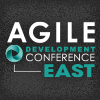 |
Test Automation on Large Agile Projects: It's Not a Cakewalk Automating regression testing on large-scale agile projects with multiple independent Scrum teams is not a cake walk. Because there is no single "test team" that performs all the testing-each Scrum team develops and runs independent tests, gaps arise as different automation implementations spring up. One team adds a new function which breaks automated tests, setting back the progress of other teams. Scott Schnier reviews one organization's journey developing a "test community of practice" to coordinate test development and maintenance across Scrum teams. Scott shares the lessons they learned, particularly selecting tools compatible with other developer and tester needs. Learn how Scott extended the JUnit framework to support automated functional testing and how his teams keep the standard that a user story is not really done until all its tests are "green" in the continuous integration, regression test pipeline. |
Scott Schnier, Agilex Technologies
|
|
Journey to Agility: Leading the Transformation How far can you take agile within an organization? Is it enough to just focus on agile development practices such as Scrum and XP or is something more needed? Agile is much more than just a development methodology. Beyond product development, it can become an organizational strategy for increased success. Skip Angel shares an example of one company's journey from no knowledge of agile to an organization of high agility. He answers many of your questions about transformation that can help your company on its journey to agility, especially how to get started. Skip describes the preconditions a company must be ready to accept-significant organizational changes and the major activities and events that happen during the transformation process. Agile changes organizations in terms of who they are, how they think, and what they can achieve. |
Skip Angel, BigVisible Solutions
|
|
|
Restating Scrum: Refining and Extending the Framework Knowing the rules of chess doesn’t equip you with strategies to win the game-much less make you a chess master. In the same way, many Scrum teams and their organizations know the rules but never consider longer-term strategies for getting the most out of Scrum. Sadly, of the thousands of organizations using Scrum, only a small fraction realizes Scrum’s true potential. To help address this epidemic and offer teams and companies ways to get more out of Scrum, the Scrum Framework has been codified in the Scrum Guide 2011. Rob Maher explains what elements of Scrum were revised and why, and offers practical guidance on avoiding common missteps that plague failing Scrum teams and organizations. Rob describes the extension model which allows the Scrum Guide to be expanded to support related strategies and practices. |
Rob Maher, Scrum.org
|
|
|
Agile Development Conference & Better Software Conference West 2012: Patterns of "Big" Scrum Software development organizations adopting Scrum have struggled to apply it to big projects with multiple teams. Dan Rawsthorne is frequently asked, “What does ‘big’ Scrum look like?” Because no two organizations are alike, this simple question does not have a simple answer. However, Dan has discovered patterns that are common in organizations that successfully implement “big” scrum. The first pattern he explores-Product Owner Team-allows the organization to handle agility up and down the hierarchy. Dan also discusses the Cross-cutting Teams pattern that handles issues-architecture, usability, integration, performance, and evaluation-that the formal hierarchy can’t resolve. Finally, Dan discusses the BuddyUp pattern to describe the best way to work with subject matter experts from dispersed parts of the organization. |
Dan Rawsthorne, Consultant
|
|
|
Transitioning Your Team to Kanban: Theory and Practice You’re familiar with agile and perhaps practicing Scrum. Now, you want to learn about Kanban to see if it is something to add to your development toolkit. Can Kanban help you? How does it differ from Scrum and other agile methodologies? Kanban is quickly being adopted by teams that want to improve their productivity. Kanban focuses on continuous flow and incorporating the theory of constraints which together allow teams to improve and streamline their product delivery. Learn about Kanban-not only the theory, but also practical lessons on transitioning your team to Kanban. Get insight into moving from Scrum to Kanban and pick up techniques that can aid any team. See cumulative flow diagrams, WIP (work-in-progress) limits, classes of services in action, and hear about other ideas from the Kanban toolset. Come and grow your agile repertoire! |
Gil Irizarry, Constant Contact Software
|


